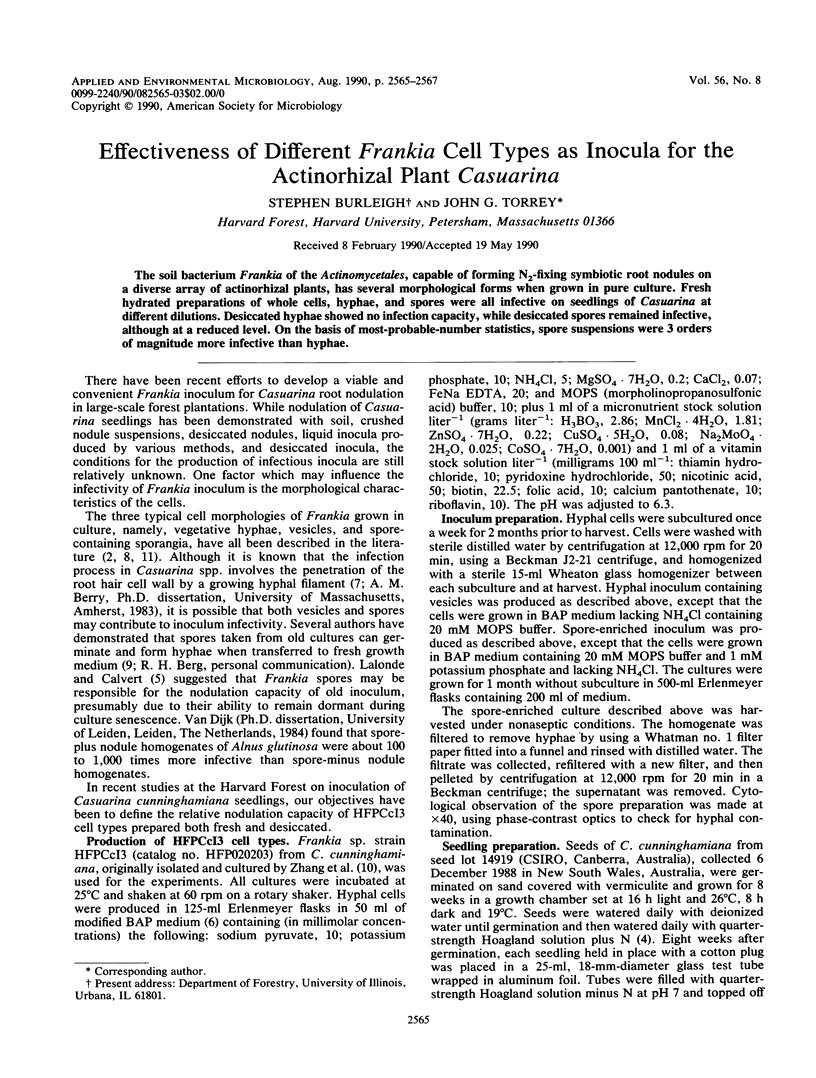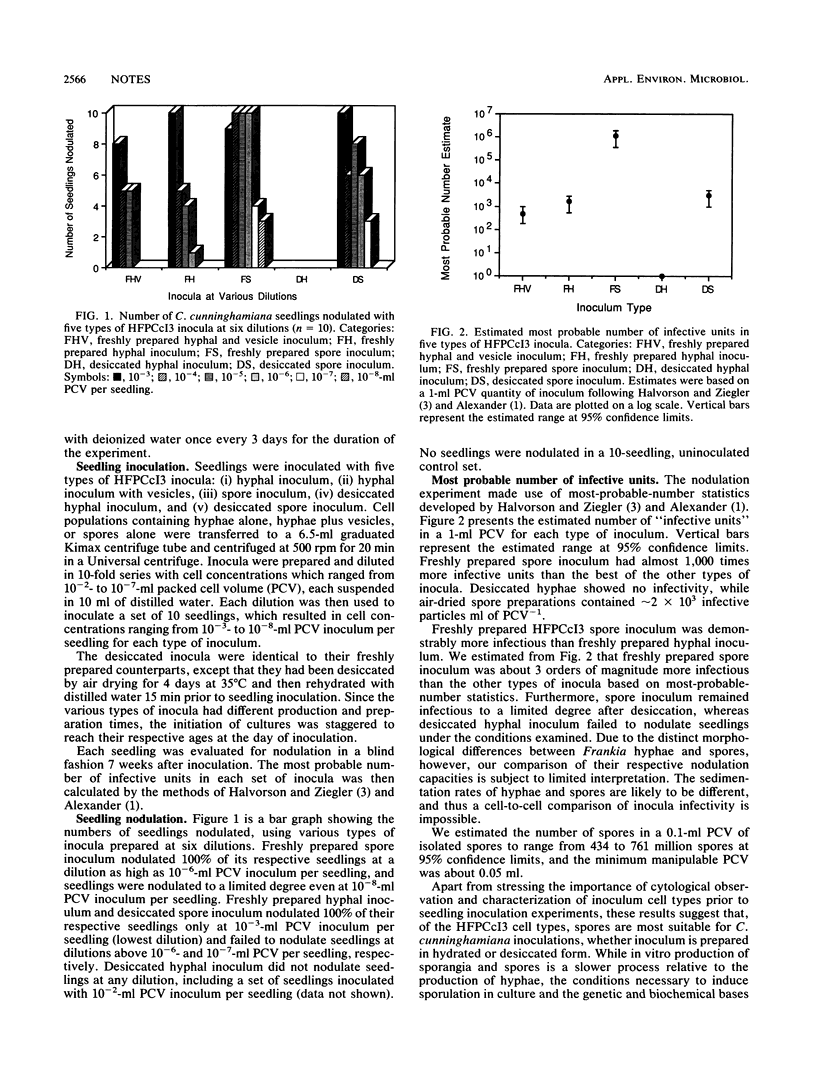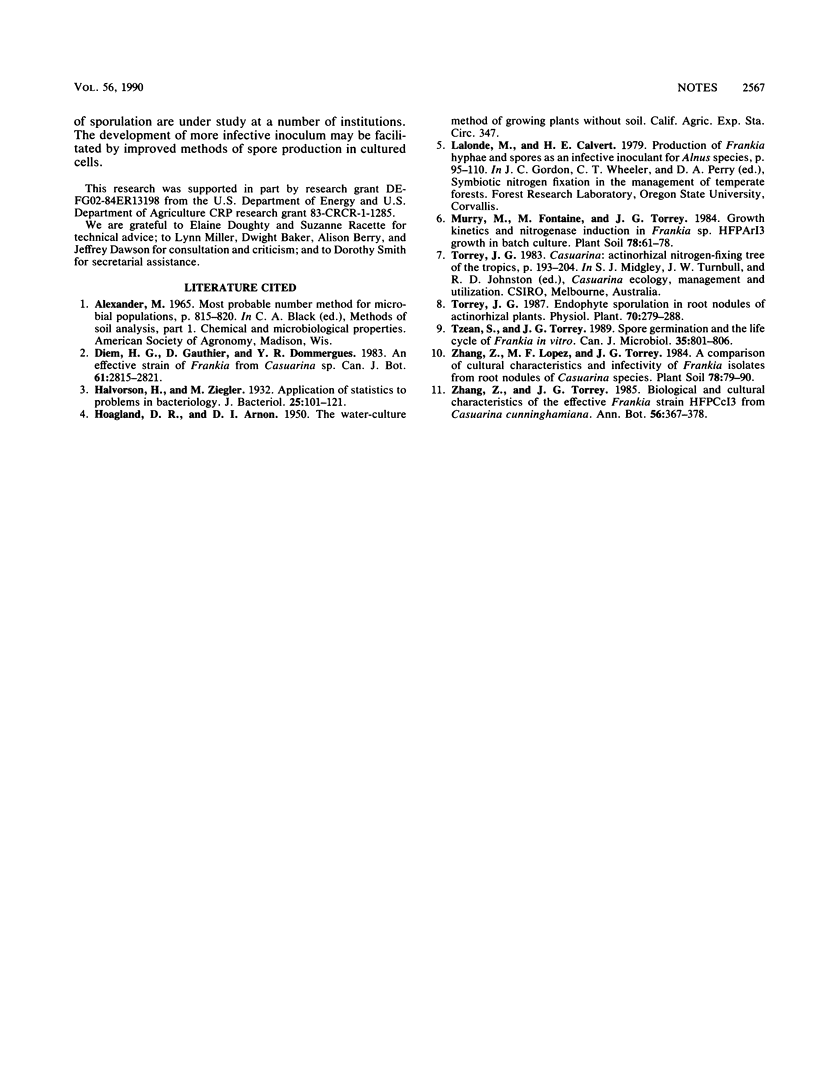Abstract
The soil bacterium Frankia of the Actinomycetales, capable of forming N2-fixing symbiotic root nodules on a diverse array of actinorhizal plants, has several morphological forms when grown in pure culture. Fresh hydrated preparations of whole cells, hyphae, and spores were all infective on seedlings of Casuarina at different dilutions. Desiccated hyphae showed no infection capacity, while desiccated spores remained infective, although at a reduced level. On the basis of most-probable-number statistics, spore suspensions were 3 orders of magnitude more infective than hyphae.
Full text
PDF


Selected References
These references are in PubMed. This may not be the complete list of references from this article.
- Halvorson H. O., Ziegler N. R. Application of Statistics to Problems in Bacteriology: I. A Means of Determining Bacterial Population by the Dilution Method. J Bacteriol. 1933 Feb;25(2):101–121. doi: 10.1128/jb.25.2.101-121.1933. [DOI] [PMC free article] [PubMed] [Google Scholar]


